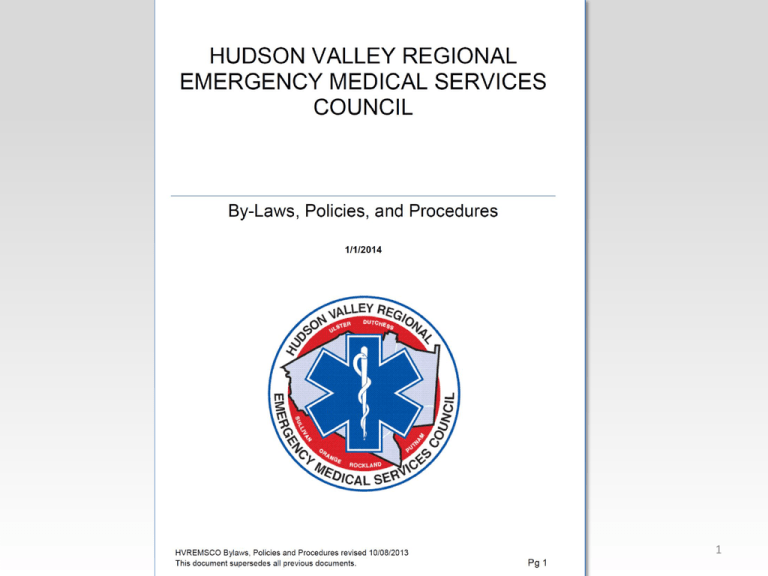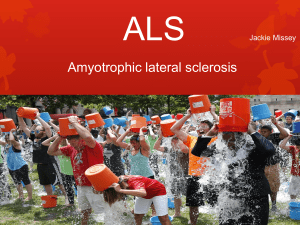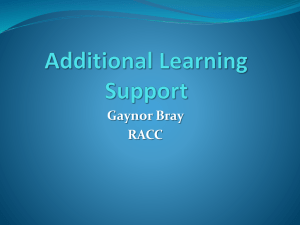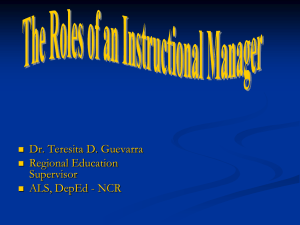Protocol-2014-ALS-Provider-Part-2
advertisement

1 HVREMAC MEDICAL PROCEDURES REFERENCE 2 Medical Procedures reference SECTION1: Airway Control • Any references to airway control will include the use of supplemental oxygen, oropharyngeal airways, nasopharyngeal airways, bag-valve-masks with supplemental oxygen, flow restricted oxygen powered ventilation devices, foreign body removal, tracheal suctioning, gastric decompression, endotracheal intubation (ETI), nasotracheal intubation (NTI), combitube (or similar device), laryngeal mask airway (LMA), pleural decompression, continuous positive airway pressure (CPAP), and/or cricothyrotomy. Procedures may only be performed consistent with the providers’ level of training and certification. 3 Medical Procedures reference SECTION 2: Endotracheal Intubation • Endotracheal Intubation Confirmation must include clinical signs for primary confirmation including: – direct visualization of the ETT passing through the vocal cords; – visual inspection of the chest for the presence of symmetrical chest rise; – auscultation at the epigastrum for absence of gurgling sounds; – auscultation at the anterior and lateral chest walls for the presence of bilateral breath sounds; and – continuous End Tidal CO2 (ETCO2) waveform capnography monitoring (see Section 3). 4 Medical Procedures reference SECTION 3: Waveform Capnography • See NYS SEMAC Advisory, 08-01; Confirmation of ETT Required Capnography • Continuous waveform capnography monitoring is required for all out of hospital adult and pediatric patients who require endotracheal intubation. The capnography device must have the ability to print and/or store the data for continuous waveform monitoring documentation as well as QA/QI purposes. The ability to print the data should be accomplished at the hospital whenever possible. 5 Medical Procedures reference SECTION 4: Cricothyrotomy • Cricothyrotomy is an invasive surgical procedure; – Intended to be used only by Paramedics who demonstrate expertise performing the procedure at a minimum of once every year in a clinical lab setting. – to be performed only in circumstances where the Paramedic is unable to ventilate a patient by any other method. – Cricothyrotomy may be performed with a large bore over-the-needle catheter or with a REMAC approved device such as the “Quick Trach” or “Nu-Trake” devices. 6 Medical Procedures reference SECTION 5: Pleural Decompression • Pleural Decompression is an invasive surgical procedure that is intended to be used only by AEMT-CCs and Paramedics who demonstrate expertise performing the procedure at a minimum of once every year in a clinical lab setting. Pleural decompression is to be performed only for the treatment of a tension pneumothorax when the patient presents with evidence of the following signs resulting from suspected trauma: – – – – Respiratory distress with absent lung sounds; AND Cardiovascular compromise as evidenced by; Hypotension Cardiopulmonary arrest 7 Medical Procedures reference SECTION 6: Medically Facilitated Intubation (replaces RSI) • MFI may only be performed by: – HVREMAC credentialed MFI Paramedics, and – on-duty at an HVREMAC MFI approved ALS agency, and – who are trained by the ALS agency to perform MFI and – approved by the agency Medical Director and – with the assistance of a second MFI trained Paramedic at the scene. 8 Medical Procedures reference SECTION 7: Venous / Osseous Access and Infusion • Intravenous Access (with or without Saline Lock) refers to surgical cannulation of a peripheral vein including external jugular cannulation with an over-the-needle-catheter to deliver medication and/or fluids or withdraw blood specimens for laboratory analysis. • Intravenous Infusion refers to administration of normal saline with a Micro-Drip or Macro-Drip administration device through an intravenous access site. – To administer medications or maintain venous access, the ALS provider should use a catheter of sufficient size to keep the vein open (KVO) and deliver medication as needed along with Micro-Drip. – To replace fluid volume, or replace body electrolytes, the ALS provider should use the largest catheter that can be introduced into the patient's vein along with Macro-Drip administration tubing. 9 Medical Procedures reference • Intraosseous Access is primarily for critical medical and trauma patients for whom peripheral IV access is not available, and it is recognized that IV access is needed urgently for delivery of fluids and/or medications. – This procedure may be performed as a standing order only in cardiac arrest, respiratory arrest, and in cases with unstable patients where the provider is unable to obtain peripheral IV access following two attempts. – In other cases, Medical Control must be consulted. – Peripheral IV sites must be considered prior to intraosseous access. The following is from the Collaborative Protocol: “… Intraosseous infusion may only be used in cases of critical patients where IO access may be lifesaving. If IO access is started in a conscious patient, the IO should be flushed with Lidocaine (2%) 40 mg (2 mL) for adults, or 1 mg/kg for pediatric patients…”. 10 Medical Procedures reference • Intraosseous Infusion refers to administration of normal saline with a Micro-Drip or Macro-Drip administration device through an intraosseous access site run according to the recommended infusion rate. – To administer medications the ALS provider should use Micro-Drip administration tubing. – To replace fluid volume the ALS provider should use Macro-Drip administration tubing, or in the case of a pediatric patient, Micro-Drip administration tubing, or preferably Macro-Drip administration tubing along with a pediatric burette or soluset. • KVO (Keep Vein Open) Rate refers to administration of normal saline at an approximate rate of 1 drip every 2 seconds when using Micro-Drip administration tubing and one drip every 10 to 15 seconds when using Macro-Drip administration tubing. 11 HVREMAC Medical Control Plan Key Points MEDICAL CONTROL PLAN SECTION 3: Classification of Levels of Pre-Hospital Emergency Medical Care • The Hudson Valley Regional EMS Council recognizes the following classifications; – Certified First Responder / Emergency Medical Responder – Emergency Medical Technician – Basic – Emergency Medical Technician Critical Care – AEMT – Emergency Medical Technician – Paramedic 13 MEDICAL CONTROL PLAN Medical Control Hospitals within the HVREMSCO Region: Dutchess County Orange County Northern Dutchess Hospital Bon Secours Community Hospital St. Francis Hospital and Healthcare Center Orange Regional Medical Center Vassar Brothers Medical Center St. Anthony Community Hospital St. Luke’s Cornwall Hospital-Newburgh Campus Putnam County Putnam Hospital Center Sullivan County Catskill Regional Medical Center Rockland County Good Samaritan Hospital Nyack Hospital Ulster County Health Alliance of the Hudson Valley 14 MEDICAL CONTROL PLAN Medical Control Hospitals Outside of the HVREMSCO Region: Western Connecticut Sharon Hospital Westchester County Hudson Valley Hospital Westchester Medical Center Receiving Hospitals (Non-Medical Control) within the HVREMSCO Region: Orange County St. Luke’s Cornwall Hospital (Cornwall) Ulster County Ellenville Regional Hospital 15 HUDSON VALLEY REGIONAL MEDICAL ADVISORY COMMITTEE POLICIES 16 POLICIES SECTION 1: Clinical Judgment Policy • The Hudson Valley Regional EMS ALS Protocols are guidelines which should be used in conjunction with good clinical judgment. • Since patients do not always fit into a rigid formula approach, situations may occur which are not included in these protocols. • In situations where there is no existing protocol and a clear need for ALS exists, the ALS provider shall contact Medical Control who shall order the most appropriate treatment within the provider’s scope of practice as defined by level of training, certification, and protocols. 17 POLICIES SECTION 2: Protocol Exceptions Policy • Should a situation arise which fails to conform to the Regional ALS Protocols, the ALS Provider and on-line Medical Control Practitioner may agree upon an altered course of action. Should either the Medical Control Practitioner or the ALS Provider not agree upon carrying out the altered course of action, either has a right to refuse the action. • All implemented Medical Control Orders must be documented on the PCR and/or addendum. • In any instance where consensus about orders cannot be reached, then all standing orders as well as medical control orders, for which there is consensus, will be completed and documented. 18 POLICIES • Any issues for which consensus is not reached will be referred to quality assurance mechanisms via appropriate agency and HVREMAC policies. • While acting in a setting which falls beyond the scope of the ALS Protocols, no ALS Provider shall be faulted or suffer punitive action for: • Following on-line Medical Control orders, provided the orders are within the ALS Provider’s standard of care, scope of practice and qualifications. • Refusing to follow an order which the ALS Provider believes to increase risk to the patient; • Refusing to perform a procedure which is beyond the ALS Provider’s standard of care, scope of training and qualifications. • Whenever an action occurs outside the ALS Protocols, the Medical Control Practitioner and the ALS Provider shall each generate and forward a report of the action to the HVREMAC within 3 days of the occurrence. 19 POLICIES SECTION 3: Communications Policy • ALS Providers may contact Medical Control at any time. • The ALS Provider must contact Medical Control; – Any time a medical control physician option is necessary for patient care – Whenever there is a patient who requires ALS services or already has ALS services initiated, but refuses treatment or transport – When an ALS Provider operates on the scene of an ALS call in excess of 20 minutes beyond patient access • When establishing communications with the hospital, the ALS provider should state the purpose of the contact: – “medical control orders requested” (restricted to a medical control facility) – “notification only” • ALS Providers must identify themselves by agency, level of certification, MAC number 20 POLICIES SECTION 4: Communications Failure Policy • In the situation where voice contact with medical control cannot be established by radio/telephone/cellular apparatus/telemetry, the ALS Provider will complete appropriate standing orders. At this point if the patient is unstable, e.g. (chest pain, AMS, severe respiratory distress, signs of hypoperfusion or hypotension with SBP <90), initiate any medical control options appropriate to the pertinent protocol[s]; however, controlled substances may only be utilized as they appear in standing orders. The ALS provider may only apply those for which the provider and agency have been approved. • Continuing attempts to establish voice contact should be made with any available Regional Medical Control Facility. 21 POLICIES • Upon completion of a call in which there has been a communication failure, medical control must be contacted and advised of the situation. • PCR documentation must include all attempts to contact medical control and reasons for communication failure. • Whenever an ALS provider is unable to establish communications with Medical Control, as defined above the ALS Provider will document the incident in detail and notify the Chief Operations Officer of the agency, or designee in writing. The case must be reviewed by the agency Medical Director and that review forwarded to HVREMS office (to the attention of QA/QI coordinator). 22 POLICIES SECTION 5: Transfer of Care Policy • ALS Providers may transfer care of a patient to another provider within the following provisions: – To an equal or higher level of care provider: • • • • – To a lower level of care provider: • • • • • When transport is by helicopter critical care team. When transport is by another provider/service with the same level of qualifications. When patient is turned over to an appropriate receiving facility. When ALS capabilities are exceeded (ex. MCI) and patient is triaged to other ALS or BLS services. When the ALS Provider at the scene recognizes that there is no indication for ALS intervention. The ALS provider may release patients not having received, or not requiring ALS care, to Basic Life Support personnel for care and transportation to an appropriate receiving facility provided the presumptive diagnosis does not anticipate the need for ALS care. This can only be accomplished when the lower level provider accepts care. When ALS capacity is exceeded (ex. MCI) and patients are triaged to other ALS or BLS services. After providing ALS level care, in consultation with online medical control, and with the acceptance of the BLS medical provider. All documentation must include the number of the medical control practitioner. When a coroner or other appropriate agency takes custody. In each situation, the ALS Provider will document the type of incident on the PCR or appropriate supplemental document. 23 POLICIES SECTION 6: Patients Who Refuse Care Policy • All adults with capacity have the right to refuse medical treatment and/or transport. It is the responsibility of the pre-hospital care provider to be sure that the patient is fully informed about their situation and the possible implications of refusing treatment or transport. • When a patient or legal guardian/proxy refuses treatment or transport: • Refer to New York State Department of Health, Bureau of EMS Basic Life Support Protocol SC-5 “Refusing Medical Aid (RMA)”; • If an ALS provider has initiated any ALS procedures and/or administered any medications, the provider must consult Medical Control prior to allowing a patient to RMA or before sending the patient BLS. – The Medical Control practitioner and Medical Control hospital must be noted in the PCR documentation. • New York State Department of Health, Bureau of EMS Statewide Basic Life Support Adult and Pediatric Treatment Protocols, 2003. 24 POLICIES SECTION 8: Destination Decisions Policy • Patients shall be transported to the nearest appropriate hospital, as defined by state/regional protocols, medical condition, and patient choice. ALS providers must make every effort to educate and inform patients of the need to go to the most appropriate facility. • Medical Control must approve any anticipated deviation from this standard. • When transportation is not to the nearest appropriate hospital, the ALS Provider shall contact Medical Control at the intended receiving hospital to see if they are willing to accept that patient. All communications will be documented in accordance with the Communications Policy. If the intended receiving hospital is not a Medical Control hospital, the provider must contact medical control at any Medical Control Hospital. • When patients are transported to a hospital not providing the Medical Control for the transport, the Medical Control Practitioner will notify the clinical practitioner (Physician, Physician’s Assistant, or Nurse Practitioner as appropriate) designated as in charge of the Receiving Hospital emergency department of the transport and the patient treatment/status. 25 POLICIES SECTION 9: Ambulance Diversion Policy • See NYS DOH BEMS Policy Statement 06-01, Emergency Patient Destinations and Hospital Diversion. • Ambulance diversion is a hospital based decision and is not binding upon the ALS service. Diversion may not be appropriate if the hospital "on diversion" is the nearest appropriate hospital and the patient's well being may be compromised by a longer transport time. 26 POLICIES SECTION 10: Inter Facility Transfers Policy • Patient care is the direct responsibility of the transferring hospital and physician for all inter-facility transfer of patients. It is the responsibility of the transferring hospital to determine and to ensure proper level of care during inter-facility transports. 27 POLICIES SECTION 11: Record Keeping Policy • The documentation included on the Patient Care Report (PCR) provides vital information, which may be necessary for continued care at the hospital. • ALS providers must document all ALS procedures performed on an appropriate PCR or addendum (ex. PCR Continuation Form or other form approved by the HVREMSCO to be used in place of a PCR Continuation Form). • In all such cases, the ALS provider will document on a Patient Care Report (PCR): – – – – – • • The Medical Control Practitioner MAC Number The name of the Medical Control Facility the time of communication all Medical Control orders implemented The ALS Provider will have the PCR signed by the authorized medical control practitioner or designee ALS Providers must complete a PCR (and when appropriate, a PCR addendum) immediately following a call, and an authorized Medical Control practitioner (Physician, Physician’s Assistant, or Nurse Practitioner as appropriate) from the Receiving Hospital Emergency Department (ED) must also sign the ALS PCR or PCR addendum. Providers must follow DOH BEMS policy 12-02 or 12-03, or their successors, as appropriate. In cases where patients are transported to a hospital not providing the Medical Control for the transport, the ALS provider will document on a PCR addendum the name of the Medical Control Practitioner and Medical Control Facility as well as the time of communication and all Medical Control orders received or denied. The ALS Provider will have the PCR addendum signed by the clinical practitioner designated as in charge of the Receiving Hospital ED. 28 POLICIES SECTION 12: Mandatory Reporting • The NYS DOH, Bureau of EMS mandates specific incident reporting responsibilities and requirements for all EMS services. Mandatory reporting of incidents must be performed as indicated in NY State EMS Code, Part 800, Section 21(q) 1-5 and Section 21(r), Part 80, 80.136 (k), NYS DOH, Bureau of EMS Policy Statement 98-11, NYS DOH, Bureau of EMS Policy Statement 09-08, and any other NYS DOH Policies and Procedures. 29 POLICIES SECTION 13: Medically Facilitated Intubation (Replaces RSI) • MFI may only be performed by: • HVREMAC credentialed MFI Paramedics, and • on-duty at an HVREMAC MFI approved ALS agency, and • who are trained by the ALS agency to perform MFI and • approved by the agency Medical Director and • with the assistance of a second MFI trained Paramedic at the scene. • Consult the HVREMAC MFI Program (Appendix 5). Any agency wishing to participate in MFI must comply with the requirements in Appendix 5. 30 POLICIES SECTION 14: Complaints or Concerns Policy and Procedures • Complaints or concerns can be made by a patient, the public, participating organizations or individual participants, including HVREMSCO staff members. All such complaints or concerns should be brought to the attention of the HVREMSCO Executive Director. • See the Manual for details. 31 POLICIES SECTION 15: EMS Disciplinary Policy and Procedures • The Evaluation Committee is a sub-committee of the Regional Medical Advisory Committee (REMAC). The Evaluation Committee consists of seven (7) members. • This Evaluation subcommittee under the auspice of Quality Improvement will gather data necessary to review clinical care issues, and make appropriate determinations, in the region. The Evaluation Committee's report shall become the basis for a consensus recommendation to the HVREMAC. • Disciplinary options of the Evaluation Committee include, but are not limited to: remediation, probation, probation with supervision, suspension for a specified time period, or recommendation of revocation of privileges to participate in the Hudson Valley Regional EMS System, to the HVREMAC. A record of each complaint or concern and the completion of the appropriate disciplinary steps shall be kept by the HVREMSCO staff. 32 POLICIES SECTION 16: Protocol Changes Policy • Any recommendations or request for changes in the Collaborative ALS Protocols should be referred in writing to the Hudson Valley Regional Medical Advisory Committee for review by the Protocol Committee. The HVREMAC representative will forward proposals through the Collaborative Protocol review process. 33 REGIONAL CREDENTIALING AND CONTINUING MEDICAL EDUCATION POLICIES AND PROCEDURES 34 Credentialing & CME SECTION 1: Program Administration • The Hudson Valley Regional Medical Advisory Committee (HVREMAC) evaluates candidates for HVREMSCO credentialing and applicable Medical Control privileges against criteria established by the HVREMAC as indicated in the Hudson Valley Regional EMS Council Medical Control Plan. At the time of initial credentialing and upon recredentialing, the applicant must meet one of the following criteria: • Currently certified New York State AEMT or Paramedic holding affiliation with a certified ALS agency authorized by the HVREMAC to operate in the Hudson Valley Region. 35 Credentialing & CME SECTION 6: Maintaining Regional Credentials • All HVREMAC credentialed Advanced Emergency Medical Technicians (AEMT) are required to: 1. Maintain affiliation with an ALS agency authorized to practice in the Hudson Valley Region. ALS Agencies must notify the Hudson Valley Regional EMS office of all new ALS provider/agency affiliations. This notification must occur before the provider is authorized to practice ALS skills in the field while acting on behalf of the agency. 2. Maintain NYS DOH Bureau of EMS certification as an AEMT 36 Credentialing & CME 3. Complete 24 hours of Physician Contact during the three year period prior to the expiration date of the provider’s HVREMSCO credentials. • 12 hours must be Medical Control Contact Hours • Up to 12 hours may be Physician contact hours, provided the topic is EMS related. 37 Credentialing & CME SECTION 7: Accruing Medical Control Contact Hours & Non-Medical Control Physician Led Contact Hours • Medical Control Contact Hour credit will be issued to programs that are delivered by a medical control practitioner credentialed by any REMAC participating in the Collaborative Protocols. 38 Credentialing & CME • Medical Control Contact Hours (MCCH) may be obtained in the following manner: – By attending Medical Control delivered programs • Credit will be awarded for attending call audits, case presentations, and lectures offered by REMAC credentialed Medical Control Practitioners. • Credit is offered for actual program length • Providers who attend MCCH in any REMAC outside the HVREMSCO, participating in the Collaborative Protocols, must submit verification of such attendance directly to their agencies and electronically to the HVREMSCO. 39 Credentialing & CME • Medical Control Contact Hours (MCCH) may be obtained in the following manner: – Through Case Reviews • ALS Providers may discuss and review their individual ALS cases, with Medical Control Practitioners in regions that participate in the Collaborative Protocols, for MCCH credit. – The case under review / discussion must be a provider’s individual case or one wherein the provider significantly participated in the care of the patient. – The provider must have transported the patient to the Medical Control facility where the Medical Control Practitioner is located. – The Medical Control practitioner has the sole discretion whether or not to award credit and must be comfortable with the review that occurred. The medical control practitioner may elect not to review cases due to volume in the emergency department. – Each review will be awarded 0.25 hour credits provided a HVREMSCO Medical Control Contact Hour form is signed by the Medical Control practitioner. – A maximum of 8.0 credits (32 reviews) is permitted by this method. 40 Credentialing & CME • Medical Control Contact Hours (MCCH) may be obtained in the following manner: – Through the Medical Control Shadow Program • Providers may earn no more than 8.0 Medical Control Contact Hours credit by participating in the HVREMAC shadow program and fulfilling all requirements. See Manual: HVREMAC Shadow Program. 41 Credentialing & CME • Medical Control Contact Hours (MCCH) may be obtained in the following manner: – Through QI Program participation • ALS providers may request MCCH allotment for Quality Improvement (QI) Committee participation that involves direct interaction with a Medical Control Practitioner credentialed by a REMAC participating in the Collaborative Protocol. • MCCH allotment will be awarded on a 1 credit per hour basis up to a maximum of 4.0 credit hours per instance for Quality Improvement Activities. • MCCH allotment will be awarded only if the following requirements are met: – Written documentation that includes the Medical Control representative’s signature verifying the ALS provider’s active QI committee involvement is submitted to the Regional Office; – The agency that utilizes the ALS provider as a QI Committee member submits a current (within two years) HVREMAC approved QI plan to the Regional Office; – A completed MCCH attendance form that includes the Medical Control representative’s signature verifying the ALS provider’s attendance to the QI committee meetings is submitted to the Regional Office. 42 Credentialing & CME • Non-Medical Control Physician Led Contact Hours may be obtained in the following manner: – By attending Non-Medical Control Physician delivered programs • Credit will be awarded for attending call audits, case presentations, and lectures offered by Non-Medical Control Physicians. • Credit is offered for actual program length • Providers who attend programs in any REMAC outside the HVREMSCO, participating in the Collaborative Protocols, must submit verification of such attendance directly to their agencies and electronically to the HVREMSCO. 43 Credentialing & CME • It is the ALS provider’s responsibility to submit verification of Physician / Medical Control Contact Hours earned to each ALS agency to which he/she is affiliated; it is the responsibility of the ALS agency to maintain the provider’s documentation of contact hours for a period of three (3) years. • It is the responsibility of the provider, when changing his primary agency, to provide to the new primary agency his record of Physician / Medical Control Contact Hours. 44 Credentialing & CME • Maintain valid and current certifications as indicated for recredentialing. • The provider’s agency of primary affiliation must submit the provider’s completed re-credentialing packet to the HVREMSCO no less than forty-five (45) days prior to the provider’s HVREMSCO credential expiration date. • It is the responsibility of the provider to meet recertification requirements and submit proof of such to their agency. • For cases where the documentation was submitted via US Post, the postmark will be used to determine the submission date. In instances where the documentation is hand delivered, the HVREMSCO date stamp will be used to determine the submission date. 45 Credentialing & CME SECTION 11: Re-Credentialing Process • ALS provider HVREMAC credentials run concurrent with and expire with the provider’s NYS DOH BEMS AEMT certificate. In order to receive updated HVREMAC credentials all ALS Providers must: – – – – – – • • Complete all of the mandatory Physician / MCCH requirements Maintain current New York State AEMT provider certification, Maintain all HVREMAC required credentials, Remain in “good standing,” Maintain a primary affiliation with a HVREMAC approved ALS agency Submit re-credentialing packet to HVREMSCO through their primary agency. Physician / MCCH verification, as determined by MCCH master attendance sheets, will be maintained by the HVREMSCO. It is the responsibility of the ALS provider to complete all HVREMAC requirements. The ALS provider will not be notified by the Hudson Valley Regional EMS Office to do so. HVREMAC credentials are only valid when accompanied by current NYS DOH BEMS ALS provider certification. It is the responsibility of the ALS provider to submit updated contact information, other required certifications and photo identification or any changes of such to the Hudson Valley Regional EMS Office. Failure to do so may result in an immediate suspension of HVREMAC credentials. 46 Credentialing & CME SECTION 12: Credentialing Non-Compliance • All ALS providers are required to maintain valid, current, appropriate and required certifications. In the event of a lapsed certification of BCLS, ACLS, or PALS / PEPP a provider will have sixty (60) days past the date of expiration to renew the certification. – Sixty (60) days after a provider’s expired certification, HVREMAC Credentials will be suspended. All agencies to which the provider is affiliated will be notified of the suspension. – On receipt of current certifications by the Hudson Valley Regional EMS Office the provider will be returned to active status and all agencies to which the provider is affiliated will be notified. – At the time of renewal the ALS provider must possess valid and current ACLS and PALS/PEPP certifications. The grace period does not extend through expiring HVREMAC credentials. 47 Credentialing & CME • In the event a provider’s re-credentialing materials are not submitted by the required submission date: – The ALS provider is immediately placed “on notice” to complete all requirements by the provider’s credential expiration date. All agencies to which the provider is affiliated will be notified. The provider must not only complete all required materials, but also take the recredentialing exam with a passing score of 80% or greater in all categories. – If required materials are not received by the credentialing expiration date, the provider is immediately suspended. All agencies to which the provider is affiliated will be notified. 48 Credentialing & CME • Providers are required to maintain a Primary Agency Affiliation. – Each HVREMAC approved ALS agency must submit to the HVREMSCO office the Provider Affiliation Form for any change of affiliated provider status with that agency. Agencies must notify the HVREMSCO office of provider affiliation changes within five (5) business days. – Providers have thirty (30) days, from time of primary affiliation change, to re-affiliate with a Primary Agency. – After thirty (30) days without a primary agency the provider’s HVREMAC credentials will be suspended. 49 MEDICATION INFORMATION 50 • See Drug Appendix 51






